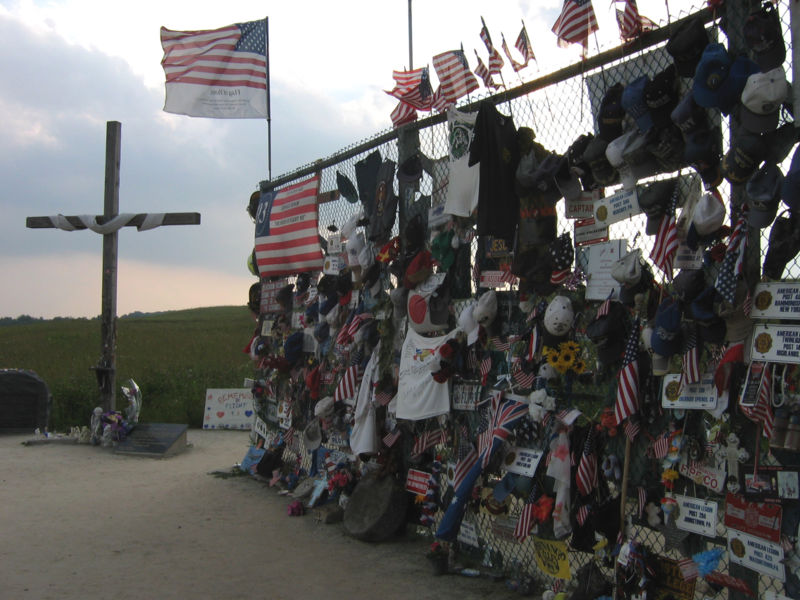 One of the threads I rarely see covered in our larger American media outlets is what I'd call a "meta-theme" -- the way that religion and politics, an oft-incendiary combo, are twinned in our national history. My colleague Mollie is much more of an expert in this arena than I am, but as a historian's daughter, I am steeped in the tension between American sacred and secular voices, one that goes back to the Puritans and the Quakers.
One of the threads I rarely see covered in our larger American media outlets is what I'd call a "meta-theme" -- the way that religion and politics, an oft-incendiary combo, are twinned in our national history. My colleague Mollie is much more of an expert in this arena than I am, but as a historian's daughter, I am steeped in the tension between American sacred and secular voices, one that goes back to the Puritans and the Quakers.
For that reason I was very happy to see the article by features writer Marylynne Pitz about "collective memory" and the United Flight 93 memorial on the Post-Gazette.com website. While Pitz focuses most of the article on comments by sociologist Alexander T. Riley, the Bucknell University prof makes a useful tour guide to the iconography of grief and hope and folk religion at the temporary memorial in Somesert County, PA. The story works because of the quotes from him.
The art, artifacts and images that make up this spontaneous shrine, along with films and books about the people who sanctified this place, fascinate Alexander T. Riley, a Bucknell sociologist.
Since 2004, the tall, engaging academic has returned often to study this homespun collection on a hillside that offers a distant view of the crash site. He is writing a book about creating the collective memory of Flight 93, noting in particular the sacred and secular symbols that Americans use to make sense of the terrorist attacks on Sept. 11, 2001.
Bingo. It's hard not to visit places like Gettysburg or other sites where much blood has been spilled without feeling a sense of the holy. And isn't making sense of our common experiences what American civil religion is all about? 'In the United States, creating this civil religion entails blending Judeo-Christian narratives with patriotism. The result is powerful, Dr. Riley said, and "people feel more moved."
We hear a bit about the Christian themes -- what are the broader Judeo-Christian ones? Is the iconography changing as America becomes more pluralistic and there is a larger population unnconnected to religion?
I'd like to know more about conflict about what the memorial site in Somerset should look like -- and how that might have played out at other national memorials. Readers might want to know more about the status of memorial plans.
The idea that conflict might be focused on the urban and the rural or believers and atheist, frankly seems a little cliched -- at the least, it demands an explanation. And I wasn't nuts about the ending, but mostly for journalistic reasons -- I wish that Pitz had returned to the theme of "collective memory."
But the anecdote of the "sand-colored" brick left by Special Forces troops is a powerful one. Understanding some of the rituals around grief and loss and the way conflicting visions sometimes ignite disputes might actually help create greater understanding between partisans. Next time you are reading a story about a fierce battle about a memorial project, step back, take a deep breath, and ponder what's really going on.
The picture from the Flight 93 memorial is from Wikimedia Commons
